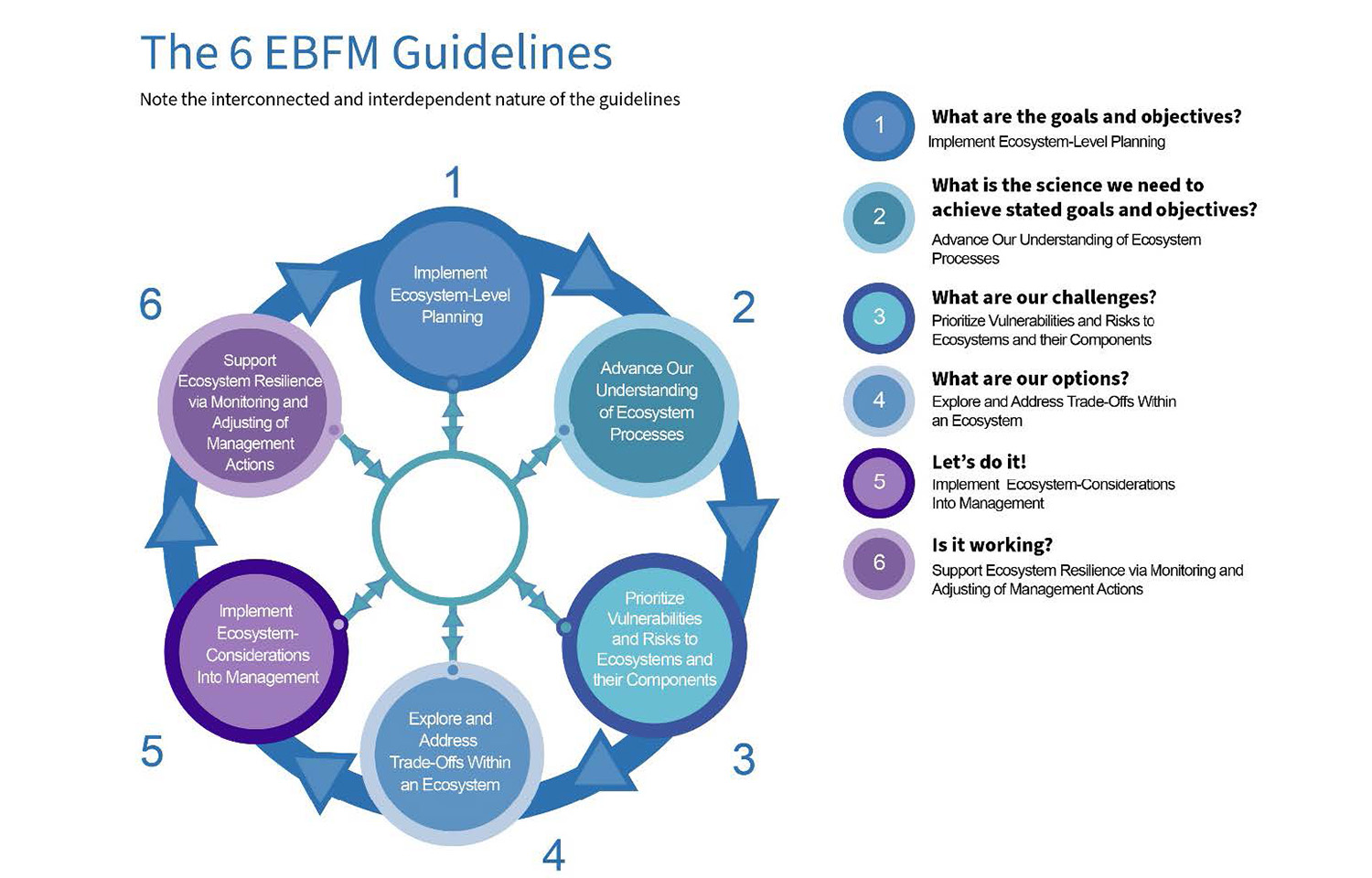NOAA Fisheries is now accepting public comments on its updated ecosystem-based fisheries management (EBFM) roadmap.
NOAA first established an EBFM roadmap in 2016 to provide guidance on the agency's policy shift toward implementing ecosystem-level planning for the country’s fisheries. The management style involves setting quotas while also considering how an individual species fits into the wider ecosystem, rather than the status of an individual stock.
“Ecosystem-based fisheries management is an integrated, science-based approach that includes consideration of the entire ecosystem, including people,” NOAA said. “It aims to maintain ecosystems in a healthy, productive, and resilient condition so they can provide the services humans want and need.”
Implementing the management system also helps NOAA meet its goals across multiple federal mandates, it said. When creating fisheries management plans, the administration has to consider the Magnuson-Stevens Fishery Conservation and Management Act, the Endangered Species Act, the Marine Mammal Protection Act, the National Aquaculture Act, and the National Environmental Policy Act.
“NOAA Fisheries must address all these mandates simultaneously,” NOAA said. “To do that, we strive to implement our living marine resource stewardship responsibilities in a larger ecosystem context, rather than focusing on a single species.”
The guidance has already been used by U.S. fisheries management councils to determine quotas for species. The Atlantic States Marine Fisheries Commission adopted ecological reference points for Atlantic menhaden in 2021, changing how the stock is managed by considering how the species – which is a forage species for a number of ocean predators – fits into the wider ecosystem.
NOAA said the administration has already taken a number of steps based on the guidance, including developing ecosystem status reports for most regions, climate vulnerability assessments in all regions, climate scenario planning for “multiple protected resources and at multiple councils,” and more.
The EBFM is subject to periodic review, and NOAA said constantly shifting environments and priorities are the main reasons why it needs to update its roadmap.
“The purpose of this roadmap is to guide and enhance NOAA Fisheries’ efforts to implement the EBFM Policy over the next five years,” NOAA said.
NOAA said the new roadmap is intended to further clarify links between EBFM and the administration’s other initiatives, including fisheries deemed to be "climate-ready," and improve connections between science and management.
"It also better integrates habitat, protected resources, and social-economic sciences," NOAA said.








